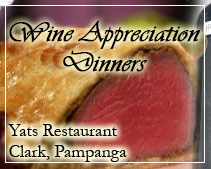The Meat Tenderness Debate
April 20, 2011
Why is meat tender? Or rather, why is some meat tender, and some not? You get what you pay for. Meat from the hindquarters is made up of much larger muscle groups, with less cartilage and connective tissue and is therefore more tender. Meat with the fat deposited within the steak to create a ‘marbled’ appearance has always been regarded as more tender than steaks where the fat is in a layer around the outside. But there is a view that both stress before slaughter in particular, and lack of aging of the meat has more to do with toughness than most other factors, including marbling . There is a complex interplay between pasture species effects, protein intake, calcium status, stress before and at killing, breed, the age of the animal, and how the meat is treated after slaughter.
The best meat cuts on an animal can be made tough by stress, and an older animal can have relatively tender meat if it is docile, handled and slaughtered without it becoming stressed, and the meat aged correctly.
The message for the person killing beasts for the home freezer is that a quiet and humane kill gives superior meat; for the hunter, an animal ambushed and killed cleanly and instantly will have superior meat to that chased by dogs or not killed cleanly.
The message for the consumer is that the more you pay, the more likely the meat is to be tender. Any expensive cut that is not tender may have been stressed before slaughter. For cheap cuts, we must resort to pounding it with a tenderizing hammer, marinating it with ginger, or cooking it long and slow.
Which meat cuts are tender?
Those that you pay most for, basically. But tenderness is not guaranteed by price. There will be tough meat cuts in every grade. Tough meat cannot be recognised by eye when you are buying at the supermarket. In the USA, where cattle are fed grains and other supplements to lay down extra fat within the muscle (‘marbling’), consumers often choose the most ‘marbled’ cuts as an indication of tenderness. Yet marbling accounts for a mere 10% of the variation in tenderness. Many lean carcasses that testing has shown were tender have received lower grades because they don’t have enough visible fat marbling to be classified as ‘USDA choice’ or higher. And yet marbling is a very poor predictor of tenderness.
Tender cuts
Tough cuts
Tenderloin steak
Round tip steak
Top blade steak
Bottom round roast
Top loin steak
Top round roast
Rib roast
Chuck tender steak
Rib steak
Chuck roll steak
Ribeye steak
Eye of round roast
Chuck roll roast
Rump roast
Clod roast
Bottom round steak
Round tip roast
Eye of round steak
Top sirloin steak
Top round steak
From Morgan et al 1991 -tender and tough meat cuts as measured by shear force derived from the US National Beef Tenderness Survey. ‘Tender’ and ‘tough’ are grades, and the most tender cut is at the top of each column. The terminology for the cuts is American.
How do you measure ‘tenderness’?
Scientists measure the force needed to shear muscles. The more force needed, the tougher the meat is. This is known as the ‘Warner-Bratzler shear force test’. It’s units of measurement are kilograms of force needed to shear a 1 cubic centimeter muscle sample. The other method used is a straight sensory panel test, where ordinary people eat the meat and record their perception of it’s tenderness. In the table above, the most tender cut, tenderloin, had a shear force of approximately 2.6, and the toughest meat cut, top round steak, had ashear force of 5.3.
What factors affect the tenderness of the meat we buy in the supermarket?
By the time the meat is in the refrigerated display, it’s tenderness – or otherwise – is largely set. Obviously, the ‘best cuts’ are the most tender. But even meat that should have been tender can be made tough by stress just prior to slaughter. In general, breed and sex have relatively little effect on tenderness, but pre slaughter treatments such as Vitamin D injections or medication, quiet handling and good transport conditions on the way to the killing plant, electric stunning to render the animals unconscious immediately prior to slaughter, freezing then thawing and then aging to allow muscle enzymes to break apart muscle fibers – all treatments significantly improved tenderness.
NO INFLUENCE
influence of growth promotant hormone
In an Australian trial using cattle growth hormones on feedlot steers, there was an increase in eye muscle area of around 5 cms, but there was no change in tenderness one way or the other, in spite of less marbling in the meat.
MINOR INFLUENCES
influence of genetics
Australian trials have identified bulls whose progeny have not just more meat and more marbling, but also tender meat. The same trial also showed that one bull produced very good amounts of meat in the progeny, but the meat was very tough. So there is variability within a breed. Again, in the USA, the Brahman breed is considered to lack meat tenderness. When investigated, it was found that different Brahman breeding bulls gave calves with different muscle tenderness – with the mean values by sire ranging from 5.3 to 6.8 kg in the shear test. In one examination of breed influences in USA, Piedmontese passed on very good tenderness traits when cross bred to Angus and Hereford, for example, where the same crosses with the Nellore breed as a sire were found to be relatively tough. ‘Double muscled’ breeds have been shown to have meat as tender as standard European breeds – and for a number of cuts it is more tender. Tenderness is heritable.
In sheep there are breed differences in the pH of muscles. Coopworth meat has tested at pH 5.77 and purebred Merinos at pH 6.16. Cross breds tend to be intermediate, as you would expect. At high and low levels, pH affects tenderness, with lowest pH and highest pH being most tender; but lowest pH having the best flesh texture. Again, there is a degree of heritability of tenderness.
Overall, while there are breed differences in tenderness, the differences are not very large, and relate mainly to a reduced ‘calpain enzyme system’ (responsible for post mortem aging) in Bos indicus. Recently (2002) a variant of the calpain 1 gene has been identified that codes for part of the calpain protease enzyme system (microcalpain). The gene variant is relatively widespread in beef herds, but exerts its influence most when the animal carries only the variant form (dominant). This specific gene, even when fully expressed, still only accounts for 20% of tenderness. It does open the possibliity of deliberately breeding this gene into herds.
But one scientist estimates only 30% of the tenderness of meat can be ascribed to all forms of genetic influences, (aside from the calpain gene variance, muscle fibre thickness can vary from 40 ยตm to 80ยตm, collagen solubility from 28% to 6%, elastin fibrils vary from 0.6ยตm to 4ยตm, where the first number in each case is from tender meat and the second from tough meat) the rest is environment (feed, nutritional status, handling, stress, post kill treatment).
Differences between sires within a breed are probably more important, particularly for Bos indicus and this might relate in large part to which sires are dominant for the highly active form of the Calpain 1 gene.
But even the most tender meat derived from progeny of the most select of sires can be ruined by stress before slaughter. It is immediately before and after slaughter that tender meat is ruined. And even in the best bred animals, the cheapest cuts will never be ‘tender’.
(The USDA’s Agriculture Research Service has an informative article on the genetics of lean meat, with passing reference to marbling and tenderness.)
influence of the kind of pasture being grazed
Some pasture species can influence influence the pH of the muscle meat of sheep that consume it. A dryland species,
phalaris sp., for example, raised the pH of sheep grazing it “quite significantly”. Meat that is very high or very low in pH is tender, but high pH sheep meat is dark and often has a ‘rubbery’ texture. Low pH meat, also tender, does not have this undesirable texture.
MAJOR INFLUENCES
influence of stress
Stress prior to slaughter is one of the most important influences on ultimate meat tenderness. Research in Australia and in New Zealand has shown that when stress in transport, yarding, handling and slaughter was minimized, beef meat was consistently at the tender end of the scale, regardless of breed. Similar results have been shown for deer and for sheep.
In venison, studies of pH have shown that high pH meat is darker but less consistently tender than normal pH meat. The pH of living animals is around pH 7, but after death the sugars in the muscles are converted to lactic acid, lowering the pH. A normal, non – stressed animal has muscle pH of around pH 5.5 after death (24 hours after slaughter all the sugars have been converted).
It was found that high pH in venison leg muscles ( a muscle not normally affected by elevated pH, indicating stress before slaughter) were much tougher than normal leg muscles, even after six weeks aging.
influence of pre – slaughter electrical stunning
Where animals are routinely rendered unconscious by electrical stunning immediately prior to slaughter, the muscles are positively affected from the tenderness point of view, mainly through mechanically fracturing some of the ‘giant’, intermediate and shorter muscle fibers of meat. Cattle varieties bred from the tropical Bos indicus ( breeds such as Brahmin, Santa Gertrudis ) do not seem to as affected, with only the ‘giant fiber’ component fracturing, the intermediate and short fibers remaining unaffected. Bos taurus the European and English cattle breeds (Angus, Hereford, Charolais, Galloway, Salers, Shorthorn etc.) are more markedly affected by electrical stimulation.
influence of aging
Very rapid chilling virtually immediately after slaughter causes the muscle fibres to contract (except for those being stretched by the weight of the carcase (e.g. tenderloin) strongly. These shortened muscle bundles resist shear forces and cause ‘tough meat’. The relaxed (stretched) muscles on the same instantly chilled carcass are elongated and ‘opened out’ and thus remain relatively tender.
The success of ‘conditioning’ a carcass by allowing the tenderising calpain enzymes to break down some of the muscle bundles depends an interplay of factors that affect the action of enzymes in general. These are the time the carcass is left to age, the temperature at which it is stored, the amount of calpain enzymes present (age and breed dependant) and the level of calpastatin, an antagonist which tends to inhibit calpain activity.
The greatest activity is within the first 7 days of aging, and by 14 days the greatest gains in tenderness will have been achieved. Chilled carcasses allowed to ‘hang’ at temperatures just off freezing for up to six weeks achieve similar gains in tenderness to meat hung for shorter periods at slightly higher temperatures (35ยบ – 40ยบ F from 2 to 10 days).
People processing their own home kill will often leave a carcass to age for 24 hours at a cool time of year when the temperature will not go over 50ยบF (temperatures higher than this allow too much bacterial growth – the beginning of very undesirable bacterial decomposition, rather than the desirable enzymatic muscle fibre degradation!) .
But not all type of muscle improve in tenderness with age – unfortunately.
Freezing the carcass prior to re-commencing normal aging also increases the tenderness without affecting juiciness or flavor – for lamb meat, at least.
influence of age
Aging shouldn’t be confused with age. Young animals are more tender anyway because the protein breaking down enzyme system decreases as an animal gets older. So, paradoxically, aging the meat by leaving it to hang for some weeks works best with younger animals least likely to need it!
In general, as animals age the amount of connective tissue (collagen) increases. More importantly, the degree of interconnectivity of the collagen increases with age, which results in the collagen becoming resistat to dissolution in cooking. Thus, meat from older animals can beome more resistant to tenderisation in cooking, and require longer, slower cooking, such as braising, casseroling, or pot roasting to deal with the greater amount and connectivity of the collagen.
But age doesn’t necessarily mean toughness. In one study, old stags that were killed without stress and had a normal low muscle pH after death have an average meat tenderness of 7.5 kg/force, which while not especially tender, beat meat from much younger animals with moderately elevated pH ( probably stress related ) and that had also been aged for three weeks.
influence of marinating
Some plant substances have a tenderizing effect. The best known is papaya fruits, which contain a protein breaking down enzyme called ‘papain’. Kiwi fruit have similar proteolytic enzymes, though not as effective. However, the meat can be made too soft on the exposed surface, with less effect in the interior, so it is not really an answer.
Scientists have shown that – “crude ginger rhizome extract at 0.5 to 1.0% levels in the marination of marginally acceptable lean beef improved meat tenderness by 20-30% in the absence of 2% salt and by 35-45% in the presence of 2% salt”. By crude ginger rhizome extract we can assume they mean ginger root juice. Marinating in fresh ginger clearly significantly tenderizes rather tough cuts of lean beef. (Interestingly, Iranian people mix chopped lamb meat with onion, and leave it ‘marinating’ for some hours in order to tenderize the muttun. The amount of onion relative to the meat is said to be quite critical.)
influence of Vitamin D supplementation
Tests in USA have demonstrated that animals fed or injected with Vitamin D (7.5 million IU of Vitamin D3) for 7 days before slaughter have more tender meat. How much more? About 26% more tender strip loin than undosed control animals (about 1 kg shear force improvement in the Warner-Bratzler shear force test), and lesser improvements for top sirloin (18%) and inside round (19%). How does it work? It is suspected that the Vitamin D greatly increases blood calcium levels (both absorbtion and retention), which in turn assist the naturally occurring enzymes which break down muscle fiber when meat is aged after death (the ‘calpain proteolytic enzyme system’). Preliminary indications are that while tougher animals become more tender, animals that already have tender meat are little affected. At this stage, the process is still largely experimental, with experiments continuing this (99) northern hemisphere summer, particularly to sort out the best dose rate and timing, as at the moment most animals injected with large amounts of vitamin D stop feeding after about five days, an udesirable effect unless the animals are going to be slaughtered within around five days of treatment.
Calcium injection
Because high blood calcium levels improve the natural enzymatic aging of meat after death, experiments have been done over the last 10 years or so with giving cattle oral ‘drenches’ of calcium before slaughter, infusing calcium into the carcass thru’ veins and arteries, and injecting calcium (usually as calcium chloride salt) directly into the primal beef cuts. All have increased the tenderness of the meat, with oral calcium a few hours before slaughter improving tenderness by about 1 kg shear force (after aging for 4-7 days) over untreated animals. Injections of calcium chloride post slaughter have only increased tenderness in chilled beef after rigor mortis has set in.
The hydrodyne process
Scientists have discovered that placing a carcass in water and then setting off a controlled explosion in the water instantly tenderizes the carcass. The supersonic shock waves instantly fracture the muscle fibers. However, this process seems to be still at the experimental stage. In the long run, this process may be able to guarantee tender meat, every time.
The future
Consumer say they will pay more for reliably tender meat.In a 1999 study, consumers claimed to be willing to pay up to $US1.84 more for meat reliably and accurately certified tender meat. Marrying automated shear testing of cooked samples of critical indicator cuts – such as the rib eye steak – with computerized tracing by bar codes on each animals ear tag will help identify ‘more tender herds’ and ‘best handling and management practise’. In this way, both better genetics and best animal feeding and handling practices can be solidly and confidently identified. Those who manage their farming practices, breeds, trucking conditions, and preslaughter yarding conditions to produce identifiable and brandable tender meat will be rewarded at last. The move in USA will be away from marbling, with it’s high ‘invisible’ fat content, and a move to certification and branding to give consumers confidence that they can buy tender meat every time, no disappointments.
Source: http://www.naturalhub.com/buy_food_meat_tenderness.htm
Poor Philippines Records in Law and Order drove city dwellers to enjoy holidays in havens like Clark Freeport.
Metro Manila has lost a great deal of its luster of old not only because of its failure to keep up with the times in development but also its reputation as a safe destination for family bonding, travelers looking to unwind and relax in a beach or a lake and retirees looking for a life of leisure.
Clark Pampanga was the largest foreign US airbase, complete with its own international airport with daily flights linking it to major cities around Asia. Inside of Clark Philippines are golf courses, casinos, family-styled resorts that smacks of the US suburban lifestyles and fine-dining restaurants.
This web site contains articles and information that will be helpful to visitors, residents and tourists traveling out of town from Manila on a short getaway to Subic, Angeles City, Pampanga and Clark Philippines. There are several web sites that contain information that might also be pertinent to what is happening in North Luzon.
For assistance with organizing and planning weddings and garden receptions, log on to http://www.PhilippinesWeddingVenue.com
For assistance with lodgings, accommodations, hotels and resorts near Manila in Subic, Pampanga, Angels City and Clark Philippines log on to http://www.HotelClarkPhilippines.com
While in Clark, one might as well add to the itinerary a visit to the famous Clark Wine Center, the largest wine shop in Philippines which offers over 2000 selections of fine vintage wine from all wine regions, vintages spanning over 50 years covering all price ranges.
http://www.ClarkWineCenter.com
If this article about Clark is useful to you, please click here to contact us to tell us what more you wish to know about this article or Clark Philippines, which can be something about Clark investment, about Clark resorts, about Clark Swimming and Leisure or simply general news about Clark.
Please send questions to Editor@ClarkPhilippines.com. Leave your name, email address, contact numbers and we will get back to you as soon as possible. Information received will not be disclosed.













